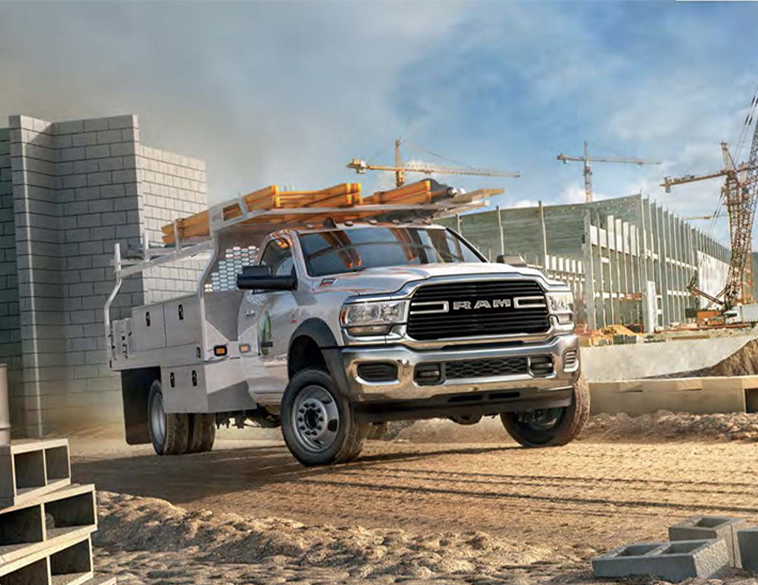Effective asset utilization requires an understanding of a whole range of different factors.
Having the right vehicle for the right job is often considered a cornerstone of successful fleet management.
Yet there are many variables that can make matching vehicles to specific functions challenging at times.
The current environment, where the automotive industry is having to deal with vehicle supply shortages and inflated prices due to lack of demand is certainly challenging.
There are other pressures such as the current focus on electrification and mandates in some jurisdictions aimed at banning the sale of new internal combustion engine vehicles within the next 15-20 years.
With that in mind, how can fleets navigate these complex situations in order to procure the right vehicles for the right functions?
It was a question that a session during the NAFA I&E attempted to answer.
The Right Vehicle for the Right Job— Challenges and Opportunities in 2021 and Beyond, which—with a special Q&A session—took place as part of NAFA I&E on September 13, featured a panel of specialists from fleet management company Donlen Corporation.
The panelists included Carlos Oropeza, Director of Marketing; Khalid Latif, Senior Vice President, Operations & Supply Chain; John Wuich, CAFM, Vice President, Strategic Consulting Services and Larry Knapp, Director of Vehicle Remarketing.
Reviewing asset requirements
Khalid Latif explained that no matter how quickly technology and trends might be changing, it is still important for fleets to review their asset requirements, including ownership, procurement and disposal.
And a key part of that is figuring out exactly what kind of role a vehicle is expected to do and the conditions in which it is going to be used.
For example, is it going to be used to carry a payload, or for a more specialized purpose such as refrigerated transport or construction/repair work? Will it be used in mild or more extreme climatic conditions?
Will upfitting need to be considered and to what extent is it required?
There’s also the question of location. If vehicles are going to be used in oilfields for example, then fleet managers need to consider the cost and logistical issues in sending vehicles to the work site, as well as maintenance and replacement considerations.
“Vehicles used in oil fields are hard to take to your neighbourhood service shop for oil or fluid service and may require a mobile Maintenance Solution right there in the field,” he explained. Latif also noted the need to keep an eye on tax exemptions that may be available, such as those for government fleets, or agricultural applications in certain states or provinces.
Total cost of ownership
Latif said it was also important to stress the total cost of ownership for each asset, not just the acquisition and maintenance costs.
For example, what is the residual value of each unit and what is the asset disposal strategy?
Also, when looking at electric vehicles, what is the charging structure available for them and what is the cost of developing it, such as adding new charging stations and, if you are considering EVs are they able to match your payload, range and job requirements?
“Some EVs may offer longer range,” said Latif, “but that range has to be balanced with the hard costs of these vehicles,” he explained. Ultimately, he said, “it’s important to understand the true daily use of vehicles in the fleet and that valuation goes beyond pricing an order to meet delivery requirements.”
When it comes to vehicle replacement strategies, John Wuich noted that current market conditions mean traditional approaches no longer work.
“Historically, many fleets have maintained a long-term replacement strategy and commonly, this strategy has been based on knowing vehicle age parameters such as months in service and mileage,” remarked Wuich.
Even in today’s environment, where semiconductor chip shortages are hampering new vehicle deliveries, Wuich explained that companies like Donlen suggest fleet managers take a long-term view in determining optimal vehicle replacement strategies.
““The chip shortage isn’t going to last forever,” he said, “but the difference today is that in planning for the longer term, you really need to think about sustainability and your EV goals.”
Strategy determines outcome
Whether fleets are planning to adopt more hybrid vehicles or try and achieve Net Zero targets in the next decade, the strategy chosen will determine how vehicles are acquired and disposed of in the next few years.
Ultimately, whatever objectives are planned, it requires carefully scrutinizing existing asset utilization and identifying which vehicles are being underutilized or are costing more for repairs and maintenance.
For those units that are inactive or underutilized, Wuich said current market trends warrant careful consideration when it comes to disposal.
One the one hand, fleet managers can take advantage of the red-hot resale market, while on the other, if vehicles are offloaded, will they require replacements and when will these vehicles be needed?
Given the current vehicle inventory shortage and the high premiums on both new and used cars and trucks at present, Wuich explained that in many cases, fleets should consider lower mileage, underutilized assets to replace those that have accrued higher mileage, provided they are able to perform a useful function within the fleet organization.
“As we wait for [new vehicle] production to ramp up it’s important to take care of your vehicles that are on the road,” he said, “and give them the preventative care and love that they need.”
Wuich also noted that vehicle telematics and data analysis related to fleet utilization can be an extremely useful tool in not only tracking vehicle usage efficiency but also in developing a procurement, maintenance and disposal strategy for today’s environment and post-pandemic.
Remarketing
Moving onto remarketing, Larry Knapp discussed retention and resale values.
He noted that in many cases, vehicles such as full-size pickup trucks and full-size vans boast some of the highest and longest utilization rates, which is why they are often more desirable and purchase costs and resale prices reflect that.
Knapp said that with the current interest in EVs, fleet managers should review some of the electric vehicle options available to them, as often they have better warranties on them than comparable gas or diesel engine equivalents.
Ultimately, he said it boils down to monitoring the total cost of ownership for each unit and historical maintenance costs.
If fleets are planning to replace higher-cost vehicles with new examples under warranty at the earliest opportunity, Knapp advised to regularly monitor resale values for those vehicles currently in your inventory. Doing so will help ensure you can offload them when demand and prices for those particular vehicles are high and look to sell during times of the year when the market is stronger, such as during the spring.
“Take advantage of the various upstream sales providers to have your vehicles inspected, valued and offered for sale while still in service,” said Knapp. “This process allows the vehicle to continue to generate revenue until it’s sold.”
This article is part of series of topical fleet-related subjects from the 2021 NAFA I&E Virtual Expo. Please visit Autosphere.ca/fleet for more details.



